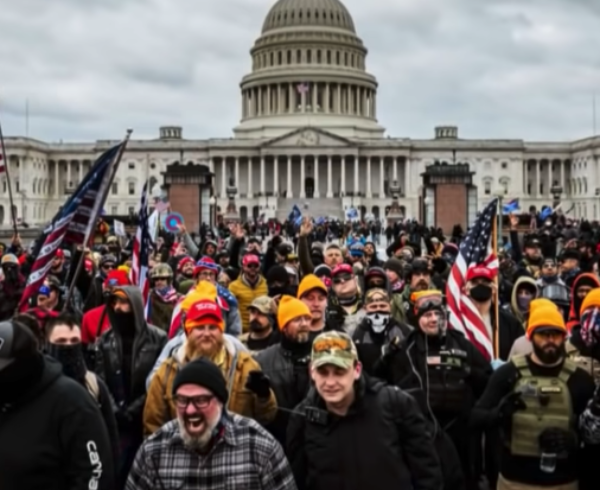November 3rd Presidential Election
It was one of the most controversial elections in American history. It was also one of the most anticipated days of 2020. By casting their vote, Americans across the country hoped to draw a line in the sand over what kind of America they wanted to move forward and hand to their children. But as the election results later revealed, our country is deeply divided over what kind of America that just might be.
For pro-Trump supporters, electing Trump a second time meant another four years of the policies and leadership of Donald J. Trump. For pro-Biden supporters, electing Biden meant the end of an era wrought with national conflicts, prejudice, injustice and lies. The November election was likely the most bi-partisan election of a president since FDR. Republican voters who typically vote the party line crossed those lines to vote for Joe Biden, a Democrat. This component, combined with an increase in Democratic voters, made all the difference.
While Trump still brought in the second highest vote in American history, it was not enough to win the 2020 election. In what might seem like a luck of irony, not only did Biden win more votes than any elected US president, not only did he win the popular vote in this election, but he also won the same number of electoral votes that Trump won back in 2016, a number Trump had previously boasted about.
An Alternate Reality
Unfortunately, this is not the narrative being communicated, believed and promoted by an alarmingly high percentage of people around the United States. A much darker and disturbing narrative exists among many Trump supporters and conspiracy theorists: Trump was the real winner of the election; the election was stolen from him due to widespread voter fraud; the American election process can no longer be trusted in its present form.
People who I know and love have bought into this narrative or a version of it. Even well known and well-loved pastors of churches and leaders of Christian organizations believe and promote it (source 2).
Are they right? Was there widespread voter fraud? Is the American election process not to be trusted? Is Donald Trump the rightful winner of the election?
To these questions, I turn. But to do that, we need to go back further into the timeline of 2020 for a fuller context.
Mail-in ballots
Because of the Coronavirus Pandemic, more and more Americans in the months leading up to the election were considering voting by mail instead of going into a polling center to vote. Waiting in long lines at polling stations would mean the high probability of large numbers of people standing in close quarters. This also meant increasing the likelihood of spreading the virus to others. In vote-by mail states, this was not an issue because every person voting would either mail in their ballots from home, drop them off at a local post office or USPS collection box, or a county approved drop off site.
The issue was raised as early as last spring, but continued through the months leading up to election, that if a much higher percentage of Americans requested mail-in ballots (also called absentee ballots) in states that normally use traditional polling centers, in addition to the already anticipated increase of people voting in vote-by mail states, would state election offices be adequately prepared? Fair question. Adequate preparation would mean election operations at the county and local level are working harder and smarter than usual to ensure a smooth election process. It would also mean that the United States Post Office, a federal institution, would need to be in full operation mode since their services would be heavily relied on.
Which is why when news came to the public that USPS postal sites all across America were removing dozens of their USPS mail drop off boxes, there was immediate concern that a smooth handling of the influx of mail-in ballots come November would not be possible. In August, the newly Trump appointed Postmaster General, Louis DeJoy, was brought before Congress to answer questions as to why the USPS was getting rid of resources instead of acquiring them for the likely influx of mail-in ballots all across the country. DeJoy had no prior experience working for the US Postal Service prior to his appointment, breaking the usual tradition of former Postmaster Generals working their way up through the ranks in the organization before being appointed to that role. Also noteworthy, DeJoy had given $1.2 million to the Trump Victory Fund as of May 7, 2020, just one month prior to his appointment as the new Postmaster General.
To make matters worse, last summer when Democratic Congressmen sought additional funds for the USPS to ensure adequate man power and supplies were available to handle the large influx of mail-in ballots, President Trump acknowledged denying the funding during an August 14th press conference.
Of course with no funding, and limited resources for the United States Postal Service, how would postal workers across our country ever manage to deliver all the legally cast mail-in ballots to polling centers by closing time Election Day, November 3rd? That’s, of course, part of the point isn’t it? They wouldn’t get there in time. Which is why some states (both Democratic and Republican led) extended their usual due date for mail-in ballots as long as they were post-marked by Election Day.
This gave Trump all the ammunition he needed to claim that the election had been stolen whether it had been or not.
The Big Lie: Widespread Voter Fraud
Of course, Trump’s denial of additional funding for the United States Postal Service was in keeping with his previous claims about mail-in voting leading to voter fraud. Back on April 8th, he claimed that vote-by mail was ripe with fraud during a White House News briefing. Over a month later, on May 24th, he tweeted this: “The United States cannot have Mail in Ballots. It will be the greatest Rigged Election in history. People grab them from mailboxes, print thousands of forgeries and “force” people to sign. Also, forge names. Some absentee ok when necessary. Trying to use Covid for this scam!” A month after this, on June 22, he tweeted, “RIGGED 2020 ELECTION: MILLIONS OF MAIL IN BALLOTS WILL BE PRINTED BY FOREIGN COUNTRIES, AND OTHERS. IT WILL BE THE SCANDAL OF OUR TIMES!” And then on July 30th, he tweeted, “With Universal Mail-In Voting (not Absentee Voting, which is good), 2020 will be the most INACCURATE AND FRAUDULENT Election in history. It will be a great embarrassment to the USA. Delay the Election until the people can properly, securely and safely vote???” Throughout the summer and fall, he tweeted multiple times the false claim that an increase in mail-in ballots would automatically mean an increase in widespread voter fraud.
On Monday, August 17, 2020, former President Trump continued his attack on mail-in ballots in a rally in Wisconsin when he said that “The only way we are going to lose this election is if the election is rigged.” Had this been a stand alone statement, in it’s best light it represents Trump’s unwavering confidence that the majority of Americans would vote for him and he’d win a landslide victory on November 3. But it was not a stand alone statement as we’ve already considered. The problem in making that claim is that he was not allowing democracy to play out. Suggesting that a rigged election is the only way he would lose actually works against a fair and free election. Trump repeated his lie about a “rigged election” at multiple rallies in August, September and October. This no doubt played a role in persuading many of his supporters to believe that the only way Trump would lose is if the election had been stolen due to widespread voter fraud.
Here’s the bottom line: If Trump could get American voters to doubt the election process before it begins, he has already won in the minds of his base…at least for those in his base who seem to trust every word he says. Here’s a few points about The Big Lie to consider.
- Social Media Frenzy: Following Trump’s election fraud claims over the summer and fall in his Tweets, at his rallies and in news conferences, voter fraud conspiracies among Trump supporters skyrocketed on social media outlets like Facebook and Twitter.
- Presidential Debate: In the September 29th presidential debate with then Senator Joe Biden, former President Trump again spouted that the November election would include “fraud like you have never seen.”
- Trump Claimed Victory: In the early morning, the day following Election Day, November 4th, Trump held a news conference and claimed he had already won the election (even though not all of the votes had been counted or at least enough votes to make such a projection). This outrageous claim has been debunked on multiple grounds. While it’s true that the election is traditionally called by press outlets all over the country prior to the official certification in the weeks following, there were more Democratic and Republican voters who came out to vote this presidential election than ever before in US history, which includes those who voted by mail-in ballots.
- Trump Claimed Illegal Votes were Cast: On November 6, a few days later, he continued his claim: “I easily WIN with LEGAL VOTES CAST. The OBSERVERS were not allowed, in any way, shape, or form to do their job, and therefore, votes accepted in this period must be determined to be ILLEGAL votes. US Supreme Court should decide.” All outrageous claims that have been thoroughly debunked.
- False Evidence: Within the days and weeks following the November 3 presidential election, videos were spreading like wildfire on social media and on YouTube claiming widespread voter fraud had happened.
At first glance, some of these videos have a slight resonance of believability until you look a little deeper into who created it, what the video is espousing and the lack of evidence of the claims. Each and every video claiming fraud has been thoroughly refuted with clarity and precision.
Again, if Trump could get his political base to believe in the reasonability of widespread fraud and raise serious doubts about the American voting process, even if there isn’t actually real evidence to back it up, then he’s already the rightful winner in their minds.
The Bigger Lie: “Mainstream Media is Fake News” and “the Enemy of the People”
There was perhaps an even bigger and more heinous lie than the claim of widespread election fraud; it was the lie that Trump launched his presidency with just days before his inauguration: News media organizations that don’t praise him constantly, that ask him hard questions and give valid critiques of his statements and policies are “Fake news.”
What’s the big deal? First of all, news media (or what we used to simply call The Press) exists to report relevant news to society, the nation and the world. Second, historically speaking, US press agencies have been considered a necessary force for holding government and government officials, including the president, accountable for their actions, especially when their actions become unethical or dangerous to many Americans. For Trump to publicly talk about the news media as “fake news” is more than just a statement about Trump’s dislike of press agencies that put him in a poor light. It’s that he has cast doubt on the very source that is known for holding corporations, nations, presidents and other leaders accountable for their actions: the press.
While it is true that some news agencies give more voice to certain political platforms or personalities, this is not adequate reason enough to cast doubt on all news sources that Trump doesn’t approve of.
Although Trump’s use of the phrase “fake news” is dangerous all by itself, he ramped up his rhetoric in a CPAC conference in Maryland back in 2017 when he referred to “the fake news” as “the enemy of the people.” For those who have studied world history, hyper nationalistic nations with dictators at the helm often silence the free press as a matter of priority, and in it’s place endorse their own state sponsored media. When facing serious questions from the press, like he did in a 2018 mid-term news conference, the former president has often turned to deflection tactics by using gaslighting, manipulation and demeaning reporters.
The stark reality is that Trump was highly successful at casting serious doubts on the very organizations that exist to hold him accountable. By contributing to a political news environment that only puts him in a good light, he has, in essence, created a news cult. A news cult is an organization that shows all the signs of a cult: silencing questions, implementing isolation tactics, supporting and enforcing group think, rejecting all valid critiques, and endorsing and promoting the voices and opinions of “yes people.”
During his presidency, news organizations like FOX News, OAN and Newsmax consistently pushed news broadcasts and shows that did exactly that. They served his interests alone, didn’t ask the hard questions, and always cast him in a good light. Each of them were deeply pro-Trump and capitalized on conspiracy based “news” themes targeted to Trump’s base. Thankfully some honest reporters and news analysts, like Chris Wallace and Shepherd Smith, broke rank from their employer and began pushing back on Trump’s actions over this last year.
The irony of Trump’s claims regarding which news media he considers “fake” is that the companies that do meet his approval (what he once called “Trump Media”) are the very agencies we should be most concerned about. And it was those news organizations who promoted the big lie of widespread voter fraud.
Trump’s Biggest Enablers
One of the clearest reasons why The Big Lie of widespread voter fraud continued to thrive was that Trump was not alone in it. Not only have tens of millions of pro-Trump supporters bought into it, but it has been actively promoted by many Republican Congressmen and Senators. While some Republicans in Congress did not accept the Big Lie, thankfully, including Senator Mitt Romney, Congressman Adam Kinzinger, and Liz Cheney, and spent their energy debunking it, it was only a small handful of them and not enough to make a difference in persuading their base. The zealous rhetoric that “the election was stolen” had already spread like wildfire among Trump supporters.
What is perhaps even more alarming than GOP Congressional leaders supporting Trump’s big lie, was that many of them warned Americans just four years prior that Donald Trump was a loose canon and that a Trump presidency was absolutely dangerous for our country. If they had known four years ago just how dangerous he was, then what led them to do a complete reversal? Hear what leading Republicans in Congress said about Donald Trump in 2016 and how they completely changed their tune in 2017-2020 after he was elected president (third source). Pay attention to the dates.
Vote Recounts
Our system of government allows presidential candidates to ask for a recount when the vote count is close between the two final candidates in a presidential election. This was the case in Georgia, Philadelphia, and Wisconsin. They each recounted and Biden won. In fact, Georgia recounted twice, and in each of the three counts Biden won.
In each of these states, widespread fraud was claimed. And in each of these states, widespread fraud was not found. Did some fraud exist? Yes, but the amount of votes that were fraudulent was so minuscule, their existence was nowhere near an amount that should compel our national government or our state governments to stop the election process nor raise serious question to the legitimacy of Biden’s win. And once the fraud was dealt with, it was acknowledged and the results changed to show the accurate results.
The only major fraudulent actions in this election was Trump’s lies regarding widespread fraud because what this did was bring unnecessary concern to nearly half of Americans on the legitimacy of our election processes.
We might think of it this way; if there had been fraud in states that typically vote red (Republican), then Republican led states would have shown the evidence so far. And so far, as with Georgia, that has not been the case. Watch Georgia’s Voting System Manager, Gabriel Sterling, a Republican, give a detailed account as to why there was no widespread fraud in Georgia or anywhere else.
Simply put: We would have seen the evidence by now.
Trump’s Phone Call with Secretary of State Brad Raffensberger
On January 2, 2021, just four days before the violent assault on the US Capitol by a pro-Trump mob, President Trump called Georgia’s Secretary of State, Brad Raffensberger. In the conversation, he talked about how well his campaign did, how much bigger his rally turnouts were over the last year in comparison to Biden’s (who didn’t hold rallies due to the Covid-19 pandemic) and his belief that he won the election, not Biden. He also stated, “look all I want to do is this. I just want to find 11,780 votes. Which is one more than we have because we won the state.” Raffensberger gently but confidently asserted, “Well Mr. President, the challenge that you have is that the data you have is wrong.” He also stated, “We have to stand by our numbers. We believe our numbers are right.” Later in the phone call, Trump stated, “You know what they did and you’re not reporting it. That’s a, ya know- that’s a criminal-that’s a criminal offense. And you know, you can’t let that happen. And that’s a big risk to you and to Ryan, your lawyer. That’s a big risk.” In another segment, Trump tells Raffensberger that if he changes the vote, he would be highly praised for his actions and that Trump would do anything for him.
Those were just small portions of the phone call. When you listen to entire call in context, you can’t help but get the nagging sense that what Trump was doing in that conversation was nothing shy of what legal experts call bribery and/or extortion.
Trump’s Court Cases
If there was any way Trump could have won the election after the states certified their vote, it would have been through our legal system. Trump’s legal team brought 62 court cases across seven states and won only one of them, a lawsuit in Pennsylvania. Fraud was not proven, however; only that a small number of mail-in ballots would not be counted due to a lack of ID verification. The state statute made provision that ID could be verified by a certain date, and those particular voters had not had their ID verified through the appropriate process by that date. Two court cases were brought to the US Supreme Court. One was brought by the Trump team, and they were denied a court hearing. One was presented by the Texas Attorney General Ken Paxton, and signed by 126 House Republicans and the approval of 17 other states. It was also denied.
One of the reasons why Democrats were concerned about the recent judicial appointment of Conservative Judge Amy Coney Barrett prior to the election was their anticipation that if the election was disputed and a case was brought before the Supreme Court, that the high court might rule in favor of Trump. With two other Trump-appointed Justices added to the court over the last four years, her appointment meant a conservative lead among the nine Justices. Thankfully, even with Justice Barrett on SCOTUS, they agreed to not hear the case.
If Trump had actually won the election through any of the legal avenues available to him, it would have happened by now. But with 72% of Republican voters recently acknowledging in a survey that they still question the legitimacy of the election results, 74% of which have concerns because of widespread voter fraud claims, it’s clear that The Big Lie and The Bigger Lie have made a profound effect on the American political climate.
Which leads me to my next blog article: January 6th: The Violent Insurrection at the US Capitol
Photo taken by Markus Wrinkler
For other related political blog articles see below:
American Christian Nationalism
Global Pandemic and the Murder of George Floyd
Why Evangelicals are Crossing Party Lines this Election #1 Leadership Matters
Why Evangelicals are Crossing Party Lines this Election #2 Medical Science Matters
Why Evangelicals are Crossing Party Lines this Election #3 Racial Equality Matters
Why Evangelicals are Crossing Party Lines this Election #4 Immigrants Matter
Updated November 3, 2021







